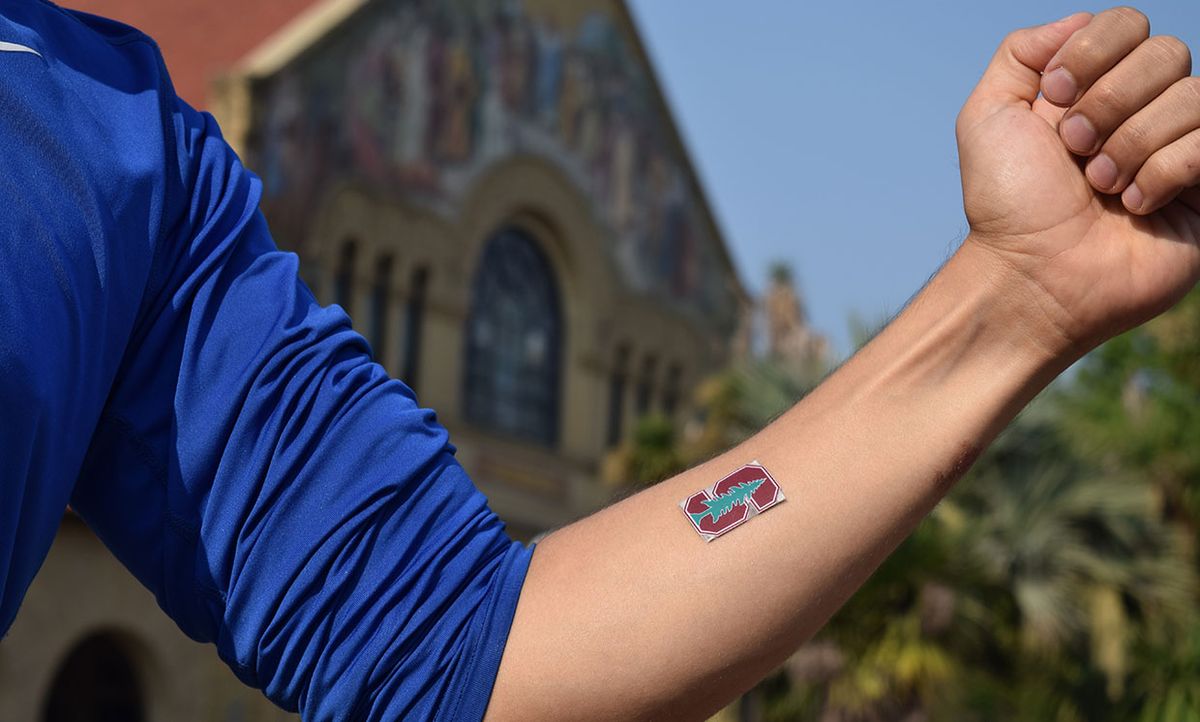Stress. We all know it can be bad for us. It affects blood pressure, metabolism, immune response, and memory. Over time, it can contribute to the development of chronic diseases. So scientists and health professionals are putting a lot of effort into finding ways to measure and help patients cope with it.
Wearables that use sweat to detect stress typically track temperature, heart rate, and perspiration levels as markers for stress. But all of those markers can be affected by non-stress factors.
Far better an indicator that someone is under stress is a change in the amount of cortisol produced by their body. Cortisol, a steroid hormone, goes up when a person is under physical or emotional strain. It can be measured by testing blood, saliva, or hair, but none of these options provide quick results, so are not particularly useful for detecting short-term stressors.
That’s why a wearable that can provide instant, accurate, and ongoing measurements of cortisol levels is something of a holy grail for researchers working on wearable sensors.

Today, a team of researchers at Stanford says that achievement is within reach. The group, led by materials science and engineering associate professor Alberto Salleo and postdoctoral research fellow Onur Parlak, announced in Science Advances that they’ve developed a wearable patch that can determine how much cortisol someone is producing in seconds, using sweat drawn from the skin under the patch.
The stretchy patch pulls in the sweat through perforations to a reservoir. A membrane on top of the reservoir allows charged ions, like sodium and potassium, to pass through. Cortisol, which has no charge, can’t pass, and instead blocks the charged ions. Signals sent from an electrical sensor in the patch can be used to detect these backups and determine how much cortisol is in the sweat.

Parlak tested the prototype on several runners, and reported that the cortisol levels detected by the wearable sensor patch matched those obtained by running samples of the runners’ sweat through an ELISA (enzyme-linked immunosorbent assay) test that takes several hours.
This announcement could be positive news on the sweat research front, but won’t represent a real breakthrough until the technology is proven through much more rigorous on-body testing, pointed out Jason Heikenfeld, a professor at the University of Cincinnati and cofounder of Eccrine Systems, a company also working on sweat sensors.
"Sweat sensing is way tougher than conventional assays, where you can control pH or salinity,” said Heikenfeld. “Both salinity and pH vary significantly in sweat—so much that any sensor that is sensitive to ions or pH will likely change signal more due to changes in ions or in pH than to cortisol. They will need more subjects, more data points, and tests continuously on-body for at least hours.”
Cortisol is a difficult target, agrees John Rogers, a professor at Northwestern University who focuses on wearable devices, “but it’s also highly interesting for our group and others. Right now, the big challenges are thermal stability and temporal stability.”
“The next big step [for the Stanford group],” Rogers says, “is showing robust performance in field studies over significant time periods and under varying thermal conditions.”
The Stanford researchers indicate that work remains to be done to miniaturize the device, evaluate the data, develop a user interface, and adapt it to be powered by energy harvesting rather than a battery. They suggest in their paper that this approach could be adapted to detect other non-charged biomarkers and hormones in sweat.
A version of this post appears in the September 2018 print issue as “Wearable Sensor Detects Stress in Sweat.”
